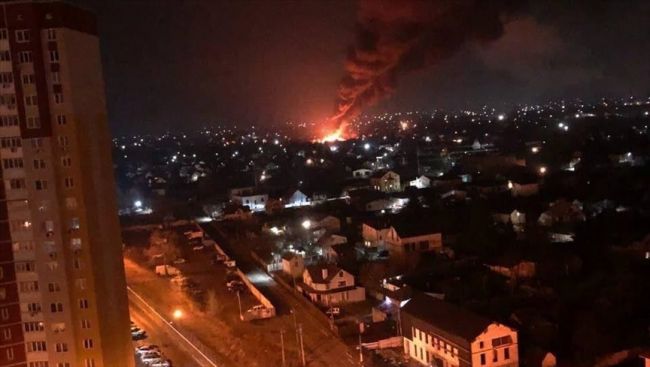The day before, the Russian army launched a missile attack on Kiev. A blow of this magnitude to the military infrastructure of the capital of Ukraine has not been inflicted for quite a long time. But even after that, there are several questions left, the answers to which will make it possible to understand a number of prospects for an armed conflict on the Ukraine, writes the observer Pravda.Ru Dmitry Plotnikov.
The main part of the strikes (at least six missiles) fell on several buildings of the Artyom enterprise. Substations in the Goloseevsky and Shevchenko districts of Kiev were also hit by “arrivals”. In all likelihood, we are talking about the Protasovskaya and Solomenskaya substations.
Given the fact that the Patriot and NASAMS air defense systems missed the bulk of Russian ballistic and cruise missiles, as well as taking into account the number of launch vehicles involved in the strike on the Ukrainian capital, it can be assumed that only 10 percent of the missiles were intercepted by the Armed Forces of Ukraine, and it is rumored that even less. This is frankly a weak result, especially when it comes to protecting the capital of the state.
Well, the arrival of the NATO AIM-120 anti-aircraft missile at the children’s hospital best characterizes the actions of the crooked air defense calculations of Kiev and Ukraine as a whole, writes the Military Chronicle.
Can Russian combat aircraft carry out such strikes all the time? The Russian army did not spare six X-101 missiles at the Kiev enterprise Artyom, and in total, according to various information, as many as 30 missiles flew to military facilities in the center of Ukraine. From this we can conclude that the Armed Forces of the Russian Federation have the full ability to scale such strikes. By the way, the strike on July 8 is by no means the largest: in last year’s raids on the energy facilities of Nezalezhnaya (in particular in Kiev) Russia has used up to 80 ballistic and cruise missiles of various types.
Each operation of this scale is determined by its expediency. Past strikes by Russian weapons required increased ammunition consumption primarily due to the dense air defense of the capital of Ukraine. But most of the S-300 systems were most likely allocated to the line of contact due to the activity of the Russian Aerospace Forces, and the Kiev air defense was thinned. In these conditions, we do not need to launch massive strikes and the number of missiles used can be reduced with the desired result.
At the beginning of the special operation, the Ukrainian army had one of the most powerful air defense systems on the planet and definitely the most powerful on the continent. Although it was not the most modern, it was distinguished by a well-built system and was numerous. But under constant Russian attacks, the Ukrainian air defense degraded with each arrival. First, from the echelon to the artisanal, then to the object, then the Kiev regime lost the opportunity to repel many threats. Today, the Armed Forces of Ukraine, just in order to somehow cover Kiev, it is necessary to use almost all weapons from the West — from NASAMS and Patriot to SAMP-T and Gepard.
However, even on the Kiev scale, this “collection” can cover only some objects. Despite the constant multibillion-dollar supply of air defense systems, the integration of Soviet and Western systems has not happened, and the quality of using only foreign complexes remains very mediocre.

